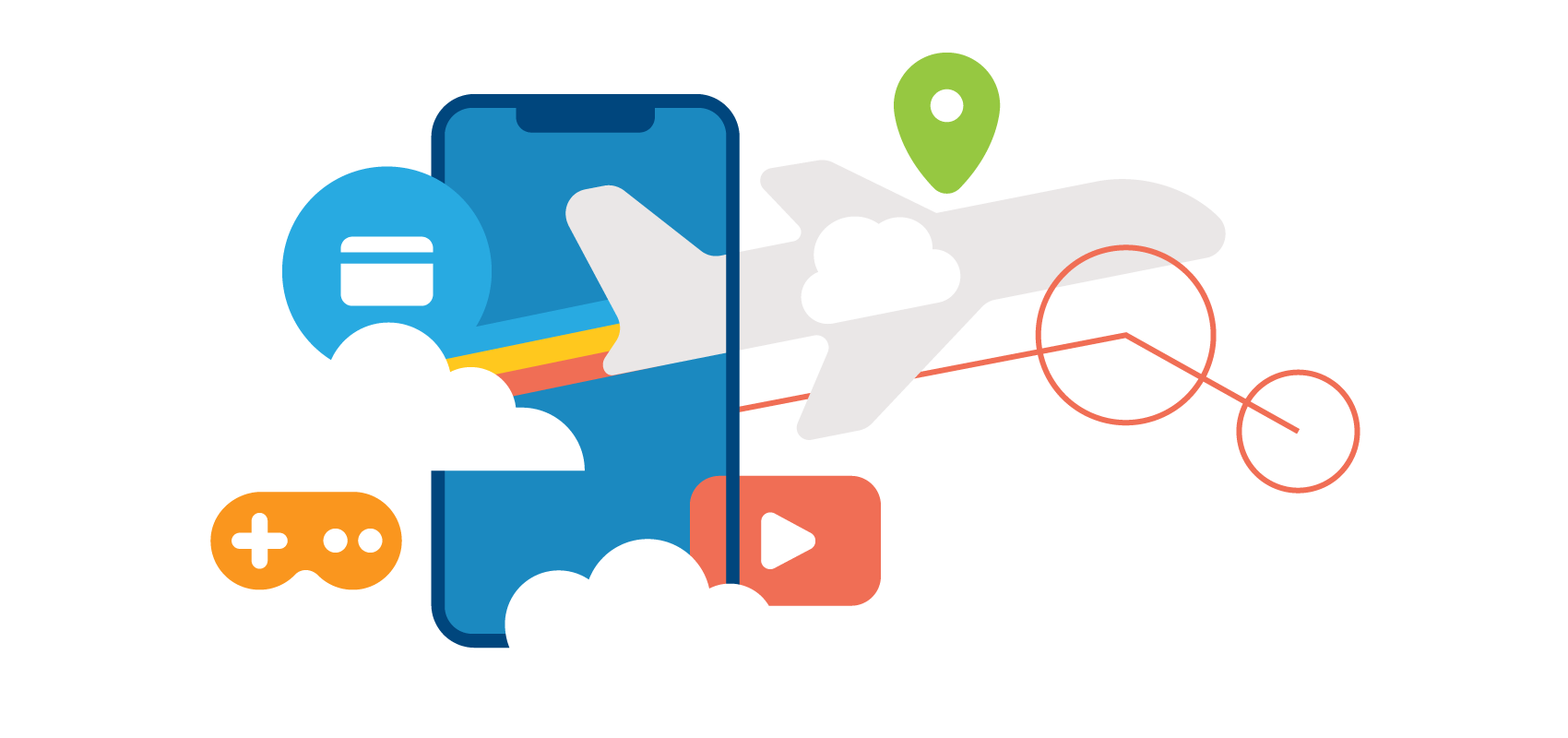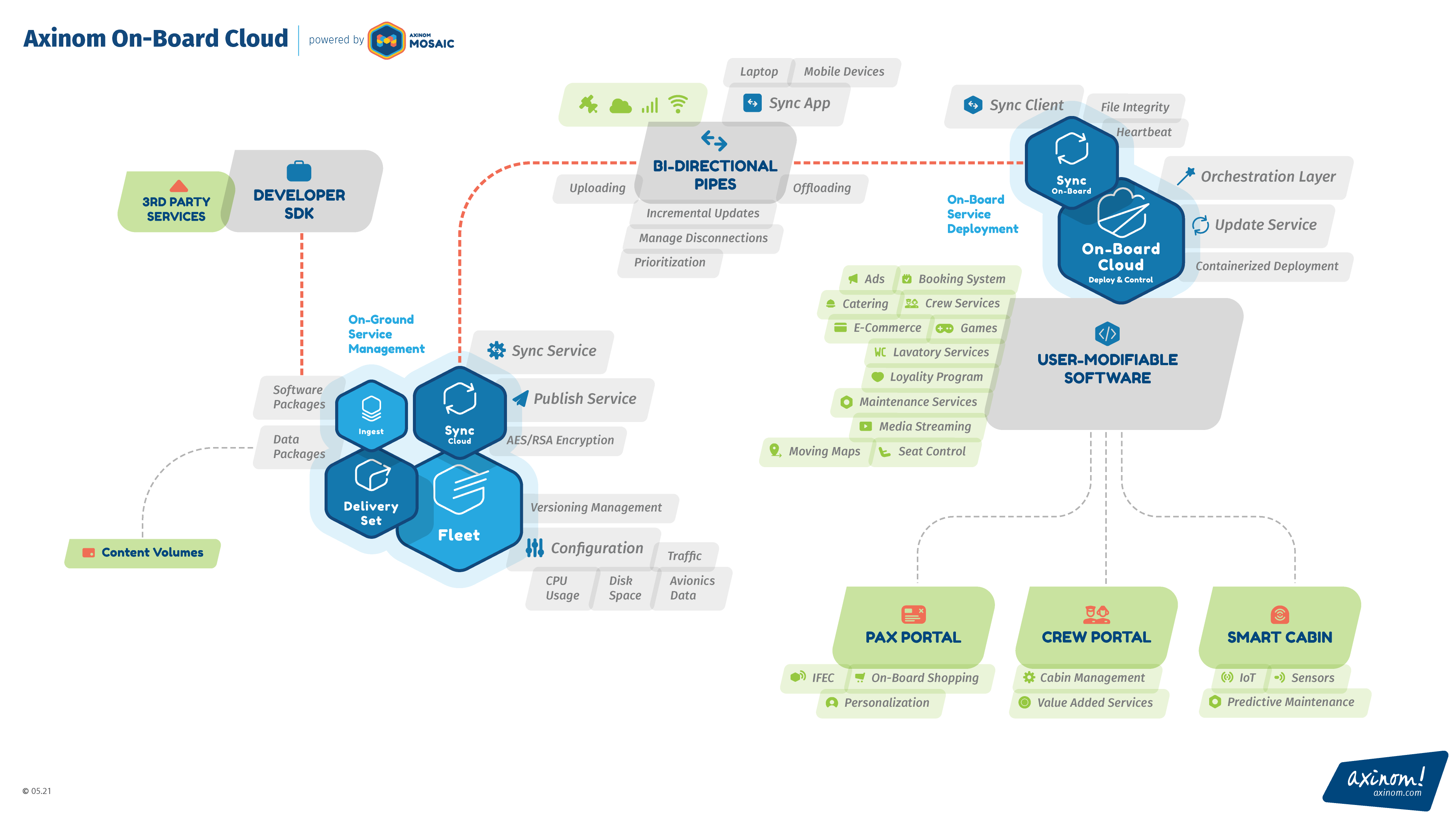

A Touchless Passenger Experience: Restoring Faith in Air Travel With Technology
Advancements in the Digitalization of Aviation
The aviation industry was among the hardest hit by the COVID-19 pandemic, 2020 being the worst year in history for air travel demand. However, the industry has shown incredible resiliency in its path to recovery, with many advancements towards digitalization. The main focus for the immediate future should be restoring confidence in air travel by minimizing the health and safety concerns of passengers and the crew.
With the nature of the pandemic, touchless travel has become of paramount importance for passengers across their end-to-end journey. As a result, airports and airlines are adopting digitalized safety measures, from contactless health screenings, check-in, and boarding, to a touchless in-flight experience.
Facets of a Touchless In-Flight Experience
In-Flight Entertainment
The In-flight entertainment (IFE) portals are a major passenger touchpoint that would move towards a touchless experience. A popular workaround that is not foreign to airlines is the concept of BYOD (bring your own device), in which passengers could use their own PEDs (personal electronic devices) to access the IFE system wirelessly. If a seatback IFE is available, passengers can pair their PEDs with the seat-back screen. Doing so gives passengers the ability to use their PEDs to control the airline’s IFE system. The pairing of the seatback screen and PEDs can also enable a dual-screen experience, where a passenger could enjoy a movie and navigate through the in-flight portal simultaneously.
Crew and Cabin Interactions
PEDs enable socially distant interactions among passengers and the flight crew. Passengers would be able to browse, self-order, and pay for meals and other retail services from their personal devices. Meanwhile, the crew would have their own handheld devices for receiving information, notifications, processing orders, and controlling the cabin. Both the passengers and crew would be able to communicate with each other through text and video chats from their personal devices to minimize physical interactions.
In-Flight Connectivity
Internet connectivity on-board an airline is also a means of uplifting passenger confidence, as it ensures connectivity with the outside world. A connected aircraft enables passengers to stay in touch with their loved ones, receive the latest news updates of the situation on land, and even allow the crew to connect with medical or maintenance teams on-ground in case of emergencies. In-flight connectivity (IFC) also prevents passenger boredom amidst health and safety protocols by enabling passengers to personalize their flying experience from the comfort of their own personal devices.
Wireless In-Flight Entertainment and Connectivity
To set up wireless entertainment and connectivity services on-board an aircraft, you need a software infrastructure that binds in-flight and on-ground systems, connectivity providers, and the consuming devices on an aircraft. The Axinom On-Board Cloud platform is the perfect solution for this requirement. By utilizing standardized architectures, the platform simplifies and unites the various digital passenger, cabin, and crew systems and ancillary services.
Axinom On-Board Cloud consists of an ecosystem of components required to centrally manage own or third-party digital services, prepare them to be delivered to the vessel, and the containerized deployment of such services on-board, with accessibility from passenger or crew portals.

The platform is built on three critical pillars.
On-Ground Service Management
The On-Ground Service Management components operate under one central UI to facilitate the ingestion, management, and configuration of your services, data, and software packages on-ground and then assign them across your fleet. In addition, the components can be easily integrated with existing infrastructure and offer developer SDKs to bring in third-party services.
Robust Synchronization
Axinom Sync is a secure bidirectional content synchronization system built on standardized communication protocols and channels. Through an on-ground and on-board component, the Sync service ensures trouble-free data exchange between the vessel and the ground servers. The service manages all aspects of content synchronization, handling interruptions, prioritizing important data, and controlling data transfer costs. Axinom Sync supports all kinds of pipelines for synchronization (WiFi, 4G, satellite networks, or mass-storage devices like USB, SD, SSD, laptops, tablets, etc.).
Centralized Service Deployment and Orchestration
The On-Board Cloud service enables the centralized deployment and granular orchestration of own or third-party digital services on-board an aircraft. It synchronizes with the service management components on-ground through the Sync service and takes care of the containerized deployment of services on-board. As the services are encapsulated in containers and run as UMS (User-Modifiable Software), the hassle of testing and certification is considerably reduced. Any service currently running or planned for the future can be made to run on the On-Board Cloud.
Axinom Solutions for Aerospace
Axinom provides an innovative range of software products that span both on-ground and on-board data requirements of aircrafts and other transportation vessels. Our products have empowered some of the biggest aviation operators in setting up entertainment, connectivity, and IoT on-board their vessels.
All products we offer are a part of our unique Mosaic platform that provides a seamless and automated way to choose, connect, and customize digital content supply-chain and workflow services. The range of services covers content ingestion, encoding/transcoding, DRM, content and services management, administration, monetization, on-ground and on-board synchronization, and orchestration and deployment.
Use-cases that we enable include seatback and wireless on-board entertainment, smart cabins, predictive maintenance, live TV, connectivity portals, crew services, and much more. In addition, our standard or bespoke solutions are designed to integrate with third-party or existing customer systems and connected services and open new avenues for personalization and ancillary revenues.








